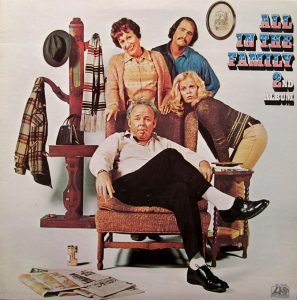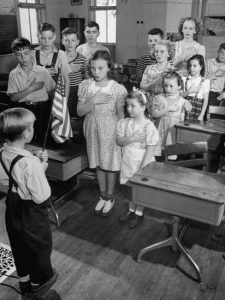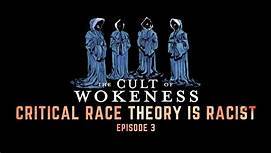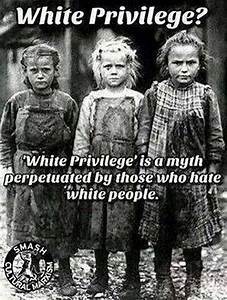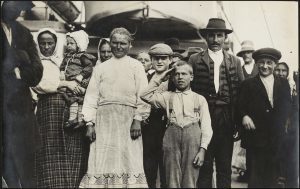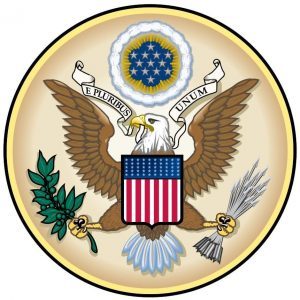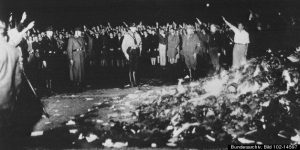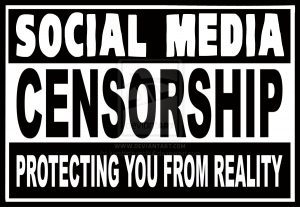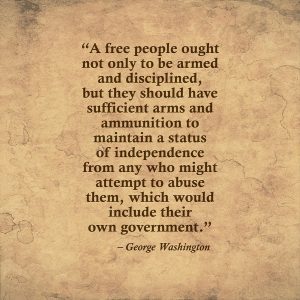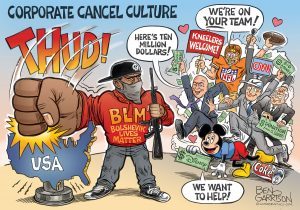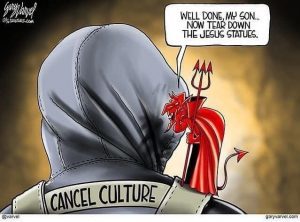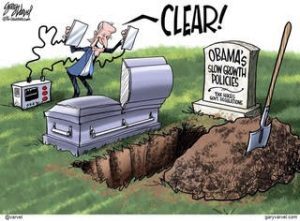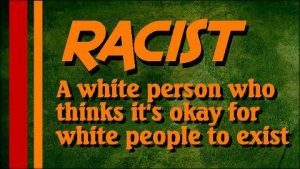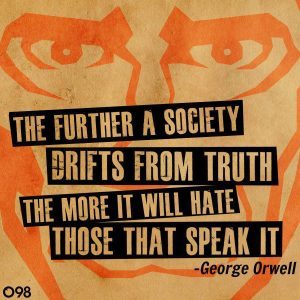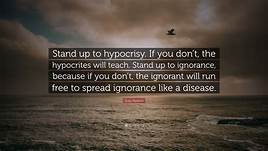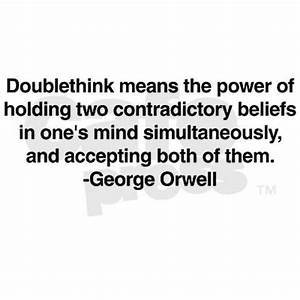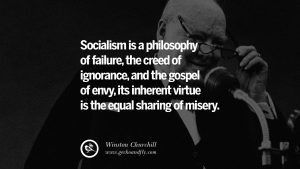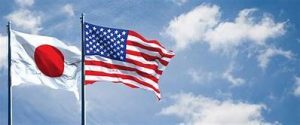Ronald E. Yates's Blog, page 56
March 25, 2021
How Political Correctness is Destroying Humor in America
(A while back I posted about the death of humor in America. Here is an updated version of that post. I hope you enjoy it )
Once upon a time in America, we used to be able to laugh at ourselves. And nobody was offended. Just listen to old radio shows, and you will see what I mean.
Without a doubt, the old Fred Allen radio shows would be banned today because of the ethnic humor displayed in a segment called “Allen’s Alley.”
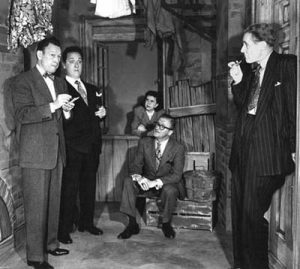 The Cast of Allen’s Alley
The Cast of Allen’s AlleyThere was the wry Jewish housewife Pansy Nussbaum, stoic New England farmer Titus Moody, and bellowing Southern Senator Beauregard Claghorn–all stereotypes that in today’s hypersensitive culture would be considered politically incorrect.
Allen’s show ran from the 1930s into the late 1940s, and it was really funny. I discovered it, and other fantastic comedy radio shows like Jack Benny, George Burns & Gracie Allen, and Bob Hope in the 1960s when there was an old-time radio revival and many old radio shows were rebroadcast on stations devoted to nostalgia.
I can still recall listening to Senator Claghorn say things like: “Somebody, Ah say, somebody knocked;” “I’m from the South, Suh;” “That’s a joke, son”; and “Pay attention, boy!”
After talking with Sen. Claghorn, Allen would introduce the next guest in the ally by saying: “It’s Titus Moody.” The stoic New Englander would answer with a sardonic “Howdy, Bub.”
Then there was Mrs. Nussbaum who spoke with a decidedly German/Yiddish accent and when Allen introduced her, said things like “You were expecting maybe…” at which point she would butcher some famous person’s name “…Veinstein Chuychill?”
In their book The Big Broadcast 1920-1950, Frank Buxton and Bill Owen wrote: “[Claghorn, Nussbaum, and Moody,] were never criticized as being anti-Southern, anti-Semitic, or anti-New England. The warmth and good humor with which they were presented made them acceptable even to the most sensitive listeners.”
Sadly, the Political Correctness Gestapo that pervades America today would disagree.
And so do many of today’s comedians who have gone on the record lamenting the hyper-sensitivities of today’s readily offended audiences as well as the death of the kind of humor that made Fred Allen a staple with audiences.
Take this recent joke by Canadian comedian Norm Macdonald:
“Two businessmen bought the Milwaukee Bucks for $550 million. They are very excited with their purchase, as this is the only legal way to own black people,” Macdonald quipped on his podcast.
 Norm Macdonald
Norm MacdonaldJokes like this don’t fly in today’s America. If he told that joke here, the habitually offended would immediately protest and call Macdonald a racist. However, there is hypocrisy in this. Typically, jokes in which white people are made fun of, are less offensive to people than jokes where black people or a minority are made fun of. This is because of the rise of a politically correct (PC) culture where people seem to think that minorities are offended by jokes about them.
For your consideration, I offer several more comments from comedians and comics who feel the political correctness that permeates America today is robbing us of our ability to laugh at ourselves and others.
John Cleese of Monty Python and Fawlty Towers fame explained recently that he stopped using any race-related jokes when he was criticized for telling jokes about Mexicans in his routine.
“Make jokes about Swedes and Germans and French and English and Canadians and Americans, why can’t we make jokes about Mexicans? Is it because they are so feeble that they can’t look after themselves? It’s very, very condescending there.”
During a recent interview with CBS’s 60 Minutes, Daniel Lawrence Whitney (Larry the Cable Guy) said political correctness had gone too far.
“It’s gotten way outta control. You know. I really think that we’re at a point in this country where people really need to take the thumb outta their mouth and grow up a little bit and realize there’s a lot bigger problems out there than what a comedian did a joke about.”
Take a look at the Cable Guy’s “politically correct” version of “The Night Before Christmas:”
A while back, Gilbert Gottfried wrote a piece for Playboy Magazine called “The Apology Epidemic” in which he said America’s current “apology culture” has gone too far.
“Imagine if the most brilliant comedians in history were working today,” he wrote. “They’d never stop apologizing. Charlie Chaplin would have to apologize to all the homeless people he belittled with his Little Tramp character. W.C. Fields and Dean Martin would both have to apologize to alcoholics. The Marx brothers would have to apologize to Italians, mutes and uptight British ladies. Comedy has been around for a long, long time, and there have been a lot of impolite, unpleasant and jaw-droppingly politically incorrect jokes. You went up there as a comic and joked about it all, and nothing was off-limits. And to this day, nobody has died from a single joke.”
Comedienne Lisa Lampanelli recently wrote an article for the Hollywood Reporter called: “How Political Correctness is Killing Comedy.”
In it, she said: “Here’s the problem: Comedy, probably more than any other art form, is subjective. What jokes crack up your mom, your little brother and your gay best friend will be completely different — unless it’s a video of a guy getting hit in the gonads with a piñata stick. That’s funny to everyone….If you like safe, generic comedy that’s fine. Go on a cruise ship and crack up listening to the comedian point out the hilarious differences between loafers and shoes with laces. But don’t go to one of my shows and be outraged by what you hear. Going to my show and expecting me not to cross the line of good taste and social propriety is like going to a Rolling Stones concert and expecting not to hear ‘Satisfaction.’”
Canadian comedian, Russell Peters might have summed it all up best in a recent interview. Society, he said, has become overly sensitive. And political correctness is the reason.
“If you look at TV in the ‘70s versus TV now, and you see the things people said back in the day – they said the most off-color stuff and nobody’s feelings were hurt. Do you know why? Because it’s about intent. The intent then was to make you laugh. And the intent is still to make you laugh, but they’ve (the PC Police) drilled it into your head that you’re not supposed to laugh at this.”
The mega-hit 1970s show “All in the Family” could not be aired in today’s hyper-sensitive America. But when it was, and the irreverent Archie Bunker issued his racial insults, attacked the idea of women’s rights, and generally behaved like a bigot–and was called out on it by his “meathead” son-in-law or other cast members–it not only made people laugh, it actually diffused the kind of racism, homophobia, and gender inequality that existed in the 1960s and 1970s.
The show’s premise was simple: by laughing at the imperfections and faults in American society, we were actually allowing people to modify their behavior and biases without threatening them or attacking them the way today’s “cancel culture” does.
In other words, the show’s writers thought America could laugh its way toward a more inclusive and unbiased nation. In my humble opinion, when a nation can no longer laugh at itself, we are in big trouble.
Political Correctness is a treacherous wedge that is dividing and polarizing us. Its proponents believe we should all think alike. But we are individuals. We don’t all think alike or laugh at the same things. Thank God!
That is not how the real world works. You won’t get far trying to walk through life on eggshells.
Kill me with comedy. I’d rather die laughing than crying.
In that spirit, I offer up a couple of politically incorrect jokes for your amusement and consideration.
Q: Have you heard about McDonald’s new Liberal Value Meal?A: Order anything you like, and the guy behind you has to pay for it.When asked if they would have sex with Bill Clinton, 86% of women in D.C. said, “Not again.”What does Nancy Pelosi call illegal aliens? Undocumented Democrats.
There. Now the PC Mafia and all the other handwringing moral guardians out there can lambast me for sharing such horribly politically incorrect humor.
And that’s no laughing matter.
March 24, 2021
The Regrettable Death of Civics Education in America’s Schools
I recall when I was in middle school, junior high, and high school learning about our distinctive system of self-government and the necessity for the active informed civic participation of American citizens.
Those classes had a variety of names: American history, History of the U.S. government, and social studies were but a few.
But what all of them had in common was something called “Civics.”
Just what is Civics? Simply defined, civics is the study of the rights and duties of citizenship. It is a close examination of the privileges and obligations of citizenship. Americans’ participation in civic life is essential to sustaining our democratic form of government. Without it, a government of the people, by the people, and for the people will not last.
Those are exciting ideas if presented correctly. They are the very underpinnings of our country’s founding as well as our most pressing social movements.
Sadly, civics education in America’s schools is dying, and if we fail to revive it, our republic and its democratic principles may die with it. There has been a sharp generational decline in Americans’ knowledge of our government, our Constitution, and our civic responsibilities.
Here are some shocking facts that substantiate that statement taken from recent surveys conducted by the Annenberg Public Policy Center and the Pew Foundation:
Only 39% of all native-born Americans can pass the U.S. citizenship test.Even more alarming is what the data say about the generational decline: among native-born senior citizens, 74% pass the citizenship test, while a mere 20% of native-born Americans under the age of 45 can pass it.Only 2 of 5 Americans can name all three branches of government.Less than one-third of Americans can name the five rights guaranteed by the First Amendment.Almost one-third of millennials believe that choosing leaders through free elections is “unimportant.”Only 30% of millennials believe living in a democracy is “essential,” compared with 70 percent of baby boomers.One in 10 recent college graduates thought that TV’s Judge Judy was serving on the U.S. Supreme Court.And perhaps most alarming of all: Only 17 percent of Americans say they trust the government in Washington to do the right thing.A major source of the problem is that the nation’s Founding principles are being undermined not only in colleges and universities but even in K-12 education—all of which have drifted progressively toward socialism.
There is little or no appreciation by teachers of the Founding documents, except to dismiss them as the sham rationalizations of white male property holders. We need to be wary because action civics is a movement that is pushing hard for wide-scale acceptance. We know our students are civically illiterate.
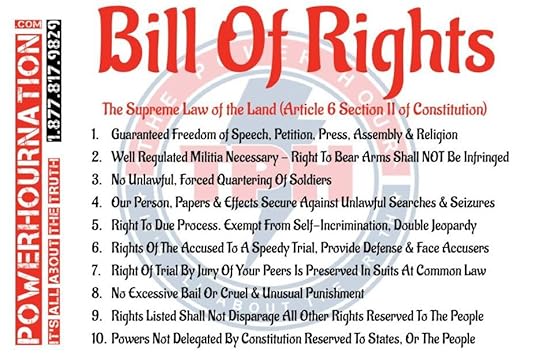
It seems prudent to first teach them what our principles are, and then, there are very proper ways for them to go out and ‘do civics.’ But understanding the Founders and our nation’s Founding principles must come first.
Instead, students today are being taught inaccurate, fraudulent, and revisionist versions of history by highly politicized teachers and professors. Using duplicitous tomes such as Howard Zinn’s A People’s History of the United States, mendacious notions such as Critical Race Theory, and the discredited New York Times’ 1619 Project, teachers are indoctrinating young minds with the idea that America is a malevolent nation whose history is corrupted by slavery, bigotry, white supremacy, systemic racism, exploitation, and capitalist imperialism.
The fact that America is the only nation in history ever founded on an idea—that the only legitimate purpose of government is to protect certain inalienable rights that include the right to life, liberty, and the pursuit of happiness—is conveniently disregarded.
Our nation’s founders were quite clear: government is not there to tell people what to do, or how to live their lives or to take by force what each person has earned by his or her own efforts.
President Ronald Reagan once said: “Freedom is never more than one generation away from extinction. We didn’t pass it to our children in the bloodstream. It must be fought for, protected, and handed on for them to do the same, or one day we will spend our sunset years telling our children and our children’s children what it was once like in the United States where men were free.”
That’s a frightening thought, but today I see it becoming more and more likely.
Adam Seagrave, associate director of the School of Civic and Economic Thought and Leadership at Arizona State University, recently wrote the following: “Our schools have been largely neglecting Civics education for the past 50 years. Without this foundation in place, American constitutional democracy appears to be reeling. Why has this happened? Two main culprits are to blame:
The disproportionate emphasis on STEM (science, technology, engineering, and mathematics) education that followed the original “Sputnik moment” during the Cold War and has been reinforced in public policy ever since; AND:The culture wars that emerged in reaction to the civil rights movement, the Vietnam War, and second-wave feminism in the 1960s and 1970s.It is important that educators don’t see their role as teaching one political ideology over another. Too often, however, teachers confuse teaching civics with teaching politics. That is not what civics education is all about.
In today’s super-heated and polarized political environment teaching civics is a tough task. I discovered that while teaching journalism as a professor at the University of Illinois.
A class discussion about civil discourse can degenerate into all-out verbal warfare in seconds. One minute you are discussing the importance of carefully and rationally considering the opposition’s opinion, and the next you are throwing yourself on top of the “word- grenade” some offended student has just lobbed into the middle of the room.
The fact that social media and mainstream media are both setting an example for belligerent vitriol hasn’t help cool the heated exchanges either. These days, students are all too quick to follow suit.
Many students turn to spitting out soundbites they have heard and rarely listen carefully to the opposition. That shouldn’t be a reason to shy away from these discussions, but ironically, it is the very reason we need to have them.
When I was in elementary and middle school, every school day began with the class standing, hand on heart, and reciting the Pledge of Allegiance.
Today, that is considered passé and even discouraged in some schools. That’s too bad because those words still carry terrific meaning and in a way, they are a lesson in civics themselves:
March 20, 2021
Critical Race Theory and its Dangerous Ethnic Cleansing Agenda
A few days ago, Florida Governor Ron Desantis took the bold step of announcing that the decidedly racist, anti-white orthodoxy called Critical Race Theory will not be allowed to indoctrinate his state’s school children.
“Let me be clear: There is no room in our classrooms for things like critical race theory,” Desantis said during a press conference. “Teaching kids to hate their country and to hate each other is not worth one red cent of taxpayer money.”
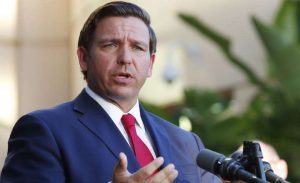 Fla. Gov. Ron Desantis
Fla. Gov. Ron DesantisProponents of CRT have bulled and rammed it into hundreds, if not thousands, of public schools, colleges, universities, and corporations. As a result, CRT is steadily replacing academics with racist activism that is meant to indoctrinate white children as young as five to think they are racists based on the color of their skin and the coincidence of their birth to white parents—who, because of their “whiteness” are also racists.
Also, CRT teaches children and university students that the United States is an irredeemable and racist nation founded by white supremacists.
But Desantis, and a growing number of other political and educational leaders, are not having any of it.
“Florida’s civics curriculum will incorporate foundational concepts with the best materials, and it will expressly exclude unsanctioned narratives like critical race theory and other unsubstantiated theories,” DeSantis said.
Good for him. It takes guts to stand up to the “woke” tyrants and martinets who are cramming CRT down our throats,
And good for Cornell University Law Professor William Jacobson, who has documented critical race theory’s ubiquitous and dangerous spread via a special “anti-woke” website: https://criticalrace.org.
 Prof William Jacobson
Prof William JacobsonAccording to the site: “CriticalRace.org is a resource for parents and students concerned about how Critical Race Theory, and implementation of Critical Race Training, impacts education. We have compiled the most comprehensive database to empower parents and students.
“We have researched and documented Critical Race Training in over 200 colleges and universities in the United States. The website explains Critical Race Theory itself and provides resources to learn more. Additionally, it allows users to look up the steps their school has taken to mandate Critical Race Training in different parts of the college experience, from changing academic codes of conduct to funding “equity” projects.”
It’s about time somebody began to expose CRT and the fallacious “1619 Project” for the fraudulent and detrimental pseudo-academic drivel that they are.
For his efforts, Jacobson has been hounded and harassed. Fifteen student groups have boycotted his law classes. He’s been threatened by Black Lives Matter protesters. Others have sought to revoke his tenure. But he’s not budging.
“We are living in perilous times, reminiscent of the Chinese Communist Cultural Revolution, in which professors guilty of “wrongthink” were publicly denounced and fired at the behest of students who insisted on absolute ideological orthodoxy,” Professor Jacobson said. “It’s a way of instilling terror in other students, faculty, staff, and society so that others shut up and don’t voice dissenting views.”
If I were still a professor and dean at the University of Illinois, I would undoubtedly be speaking out against critical race theory, the 1619 Project, and all of the other racist, anti-white, crackpot notions that pass for valid academic thought in today’s “woke” world.
The fact is, unless we change course, these specious orthodoxies will lead us to a pedagogic catastrophe. School districts will aggregate students on the basis of identity and subordinate traditional learning to the latest fads from woke academe. When those inevitably fail, desperate teachers and administrators will be tempted to drop the old “three Rs” (reading, writing, and arithmetic) in favor of the new: racism, racism, and racism.
Woke teachers will browbeat and brainwash white children until they admit their guilt of “whiteness” and “privilege.” In the meantime, we will see more and more grade-school and middle-school children who don’t know American history and who are struggling to read and solve basic math problems. High-school seniors will graduate without being able to solve a solitary algebra problem or compose a comprehensible sentence, but hey, they will be “woke” palefaces.
That’s okay. At least an entire generation or two of white children will have been sufficiently dispirited and damaged, which is exactly what the proponents of critical race theory desire.
For some members of this nation’s minority populations, CRT and other racist dogmas are their way of achieving long-overdue vengeance for America’s inexcusable history of “whiteness.”
I pity my grandchildren.
Unlike me, they are growing up in a somber and sullen country saturated with wokeness, groupthink, identity politics, and socialism.
Most of all, (apologies to Martin Luther King) they will be judged, not by the content of their character, but by the color of their skin.
March 10, 2021
The Myths of Systemic Racism & White Privilege
Racism, Racism, Racism, Racism, Racism, Racism, Racism, Racism, Racism, Racism, Racism, Racism, Racism, Racism, Racism, Racism, Racism, Racism, Racism, Racism, Racism, Racism, Racism, Racism, Racism, Racism, Racism, Racism, Racism, Racism, Racism, Racism, Racism, Racism, Racism, Racism, Racism, Racism, Racism!
There. I‘ve said it 39 times. I could say it another 39 times, and another, and another. And by then it will have lost its meaning and its significance.
But wait. It already has, as far as I’m concerned.
That’s the problem with repeating something so often. It loses its meaning and it becomes just another social mantra that anesthetized minds tune out.
“I’m getting so tired of hearing people scream “racism” every two minutes,” I hear people say. “Will it ever stop? It’s lost its meaning.”
It’s the same with “white privilege.”
What does THAT mean?
For some in our country who love to divide Americans into “hyphenated” identities, such as Asian-, African-, Jewish-, Latino- or White- and pit us against each other, it means that white people are “privileged” because of their (gasp!) “whiteness.”
It’s a bit like accusing Caucasians of having some terminal disease or disorder like leprosy or the bubonic plague because they have white skin.
Never mind that being born white is beyond our control, just as it is for those who are born black, brown, yellow, or red.
In the eyes of America’s race hustlers, the fact that you are born white automatically makes you an evil and privileged racist. And they don’t stop there. They are continuing to spread such scientifically fallacious ideas as “Critical Race Theory,” the bogus “1619 Project,” and the anarcho-syndicalist Black Lives Matter movement.
Sorry, white person, you are guilty by chromosomal and genomic association and therefore YOU are an inveterate and incurable racist.
Of course, those black, brown, yellow, or red folks don’t have that chromosomal and genomic defect, so they CAN NEVER be racists.
Right? Wrong!
Show me ANY racial or ethnic group and I will find racists in it. Having lived and worked all over the world as a foreign correspondent, I witnessed and experienced plenty of racism and discrimination. Believe me, this country doesn’t have a monopoly on bigotry and intolerance—and it never did.
To single out the United States as a nation rife with “systemic racism” is ludicrous. I can take you to plenty of countries where systemic racism is rampant.
It certainly isn’t here.
When I hear the hysterical and frenzied tirades from those who assert that systemic racism is pervasive and flourishing in America, I have to hoot.
If that’s the case, will you please explain to me why the United States remains a mighty magnet for hundreds of thousands of black, brown, yellow, red, and yes, even white people who are willing to pay thousands of dollars and risk long and treacherous journeys at the hands of vicious human smugglers to enter this country illegally?
Oh, I get it. They WANT to come to a nation rife with systemic racism. I see. I NEVER thought of that. I guess that’s why Prince Harry and wife Megan Markle (The Duchess of Sussex) decided to trade the modest racism of Great Britain for the more flagrant systemic racism that contaminates America.
By the way, during my career as a foreign correspondent I met and interviewed many hundreds of people in Asia and Latin America who were risking everything to come to America and you know what, not one of them told me the reason they were coming was so they could enjoy living in a nation flourishing with systemic racism and white privilege.
 Prince Harry & Duchess Meghan In California
Prince Harry & Duchess Meghan In California“White Privilege.” Now THERE’S a term that just pleads for clarification.
Let me see now. Okay, I was privileged to be born white. It was something that I decided I wanted to do while I was still just a splinter of an atom in the cosmos. As a privileged white racist, I selected my parents, making sure they too were white. That’s where I messed up. They weren’t wealthy or members of some royal family like the Windsor’s of Great Britain.
No, they were just Kansas farmers. Man, was THAT a mistake. But never mind, I was “privileged” and I knew it.
I was “privileged” to get my social security card and to begin working at 14, sacking groceries at the Thriftway Market in Roeland Park, Kansas. Later, I was “privileged” to work 60 hour weeks in the summers harvesting wheat in Oklahoma, Kansas, Nebraska and South Dakota.
During the school year, I was “privileged” to deliver newspapers, sell pastries door to door, mow lawns, shovel snow from driveways, work as a stock boy at Montgomery Wards in Prairie Village, Kansas, bus tables at Waid’s Restaurant in Mission, Kansas, pump gas and change oil at the Fina Gas Station in Overland Park, raise hundreds of chickens, dispatch them, and sell them door to door and toss heavy alfalfa hay bales from freshly mowed pastures onto flatbed trailers.
Later I was “privileged” (and I do mean privileged) to serve four years active duty in the U.S. Army—one of the best instances of “privilege” in my “privileged” life. As a reward for that service, I qualified for the G.I. Bill which allowed me to enter the University of Kansas where I was “privileged” to work my tail off to earn scholarships so I could afford to pay for my university education.
At this point, I had been married a year and my white German wife whom I met and married in Germany was “privileged” to work 40 hours a week assembling cards at the Hallmark factory in Lawrence, Kansas. Between my wife’s job, the G.I. Bill and the handful of scholarships I earned, we were “privileged” to wind up each Friday with about $5 to spend. Our choices typically were between buying a pizza and going to the local drive-in theater.
But as “privileged” as we were, we made it work, and when I graduated in 3 years later I was offered a job as a reporter at the Chicago Tribune, where, I was “privileged” to work prolonged late-night hours covering the kinds of stories that big cities like Chicago are known for—murders, gang violence, suicides, fires, plane and train crashes, and other forms of mayhem.
In other words, I was “privileged” to pay my dues as a general assignment reporter so I could earn the opportunity to be a foreign correspondent.
Thank God for my “white privilege.” I could never have become successful at the Tribune based on my woefully negligible talent as a reporter.
What lessons have I learned from all of this? Well, if you have white skin, then you are a privileged oppressor. It doesn’t matter if your ancestors were southern tobacco farmers who never owned slaves, or Russians who fled the brutal communist tyranny of Lenin and Stalin, or German or Polish Jews who barely escaped the Holocaust of the 1930s and 1940s.
No, it doesn’t matter at all. You and your ancestors are guilty of being contaminated with “white privilege” and therefore, you are automatically a racist and you must be condemned by the virtuous minority races.
Never mind that members of this malevolent “privileged” class have no practical means of redeeming their immutable sins because as far as I know, no one has yet been able to effectively change one’s race or skin color.
But that isn’t stopping the hysteria of critical race theory from oozing into all aspects of our national life to promote the sin of “whiteness.”
Now, the Democrat California Legislature is contemplating requiring Critical Race Theory and Ethnic Studies as a high school graduation requirement. That’s great. I guess our children haven’t been sufficiently confused by their “intersectional identities.”
The fact that most Americans don’t dare to openly criticize and oppose Critical Race Theory for the deceitful racist dogma it is, demonstrates the corrosive nature of the solution. As a result, we are moving rapidly toward a repressive system of totalitarian socialism that Lenin, Mao, and Stalin would be proud of.
More important, however, is the fact that the imprudent and unchallenged embrace of these dishonest and specious theories leaves little room for open and thoughtful public discourse.
Our enemies, both external and internal, have long declared that the way to defeat a “mongrel nation” like America is to divide us and to destroy our shared American identity, which has long been the unifying feature of our nation.
When we divide our education, media, and legislation based on race and other immutable identities, we become more vulnerable to hatred and self-hate. When we create bickering tribes of distinct racial, ethnic, religious, social, and political populations, our nation withers and declines.
We must not fall into the treacherous traps that those who hate our Republic and our priceless freedoms have set for us. Those precious freedoms were won for us by countless thousands of men and women with their lives. We must not relinquish them so willingly to the America haters.
The Founders knew how important our unity was, which is why in 1782 they included our unofficial motto “E Pluribus Unum”—“Out of Many, One” on the Great Seal.
Will we be the first Americans to remove it?
March 5, 2021
“Digital book burning” and Repression in the United Socialist States of America
Welcome to the United Socialist States of America where “digital book burning” and book banning are suddenly acceptable, where Dr. Seuss has been canceled, and where books that question “transgenderism,” the legitimacy of “critical race theory,” “cancel culture,” or the bogus 1619 project are censored and banned.
Is this the free country that I grew up in? Is this the Republic for which I served four years as a member of the U.S. Army? Is this the nation where freedom of speech and independent thought was once the infrangible anchor of our existence? Is this the Republic created by men and women who fought and died so we could live in a land free of despotism, tyranny, and yes, censorship?
I always thought it was, but today I am not so sure.
When a nation begins banning books for any reason, that nation is hurtling headfirst toward the abyss of suppression. But most important, it means the freedom of expression and speech that Americans have always cherished is in grave danger.
Ever since books have been printed and distributed, there have been groups of people eager to set fire to them, ban them, and generally make sure certain titles (and the ideas contained in them) never see the light of day.
In the 1930s, book burnings were a regular occurrence in universities throughout Nazi Germany. Brainwashed students burned titles they deemed “Un-German” or subversive.
Now, it looks like digital book burning and book-banning have arrived in America.
Amazon, which sells anywhere from 50 to 80 percent of all physical books in the U.S., has been erasing, canceling, and banning hundreds and most likely thousands of books consistently—mostly by authors that do not fit a leftist or socialist ideological mold.
Recently, a book related to transgenderism that disputed Amazon’s position on the issue was removed, exposing Amazon’s Orwellian contrivance for banning books. Other books that contest critical race theory or criticize the left’s socialist platforms such as the Green New Deal, open borders, or the Democrats HR-1 voting bill which in essence will allow illegal aliens to vote in national elections, are being removed from Amazon’s digital and physical shelves.
The book challenging transgenderism was Ryan T. Anderson’s When Harry Became Sally: Responding to the Transgender Moment. Amazon’s removal of the book means that, in addition to not providing the e-book or audiobook, other booksellers on the platform are also banned from selling it.
“We don’t sell certain content including content that we determine is hate speech,” Amazon said in a recent statement.
Okay, but who defines “hate speech?” Who do you think? It’s the obsequious toadies at Amazon.
The American Civil Liberties Union, not exactly a bastion of conservatism, says there is no such thing as “hate speech.”
“One person’s hate speech is another person’s free speech,” the ACLU says.
Clearly, Amazon is not listening.
If disagreeing with and challenging a flawed and racist hypothesis called critical race theory is hate speech, then the First Amendment is indeed on its last legs.
Until about a decade ago, it was considered a mainstay of Western and American rule of law to allow free speech–including books. Now, within just one or two generations of the introduction of critical race theory in American schools and universities, leftists and even some RINOs now denounce those who disagree with CRT as “domestic terrorists.”
Amazon likely shares the same views, so it is not a stretch, then, to believe that all books from such dissenting voices will soon be labeled hate speech and their authors, domestic terrorists.
Enigmatically, you can still order Adolf Hitler’s “Mein Kampf” on Amazon Prime for single-day shipping. So, “Mein Kampf”–the book containing the ideology that began the Holocaust and WWII–is acceptable, but a critique of transgenderism that disagrees with Amazon’s unempirical opinions on the matter is not?
Does that make sense?
Not to me, it doesn’t. But I am one of those who feel “Mein Kampf” should be available to anyone who wants to read it, just as Chairman Mao’s “Little Red Book” or Karl Marx’s “Das Kapital” should.
Allowing the free-flow of thought and information is NOT DANGEROUS, as Amazon, Big Tech, and some in our leftist media seem to believe.
Censorship achieves nothing. It drives banned political discourse and thought underground where it can fester and someday erupt. It is essential that books like “Mein Kampf” or “Das Kapital” are freely available so people can learn from history rather than fall back into the totalitarian snare into which Amazon and the other Big Tech cartels have plunged.
Now that the “woke” left has even succeeded in canceling Dr. Seuss and banning several of his popular children’s books, I wonder what’s next.
 Dr. Seuss
Dr. SeussPerhaps the Biden administration and its socialist sycophants will promote physical book burnings on the South Lawn of the White House or at the foot of the Washington Monument.
Maybe the leftists and their socialist cronies will succeed in creating “secret offices” within the Federal Bureau of Investigation and the Department of Homeland Security whose job it will be to root out “political enemies” of the state, otherwise known as Republicans and anybody else who voted for or supported Donald Trump.
These new secret police entities would conduct intelligence missions and investigations to sniff out extremists and radicals in our midst.
Sound familiar? The ruling Nazi party in Germany created a similar government entity. It was called the Geheime Staatspolizei more commonly known as the GESTAPO. When it was turned loose, the GESTAPO rounded up all of the ruling party’s opponents (communists, social democrats, and vocal adversaries) and stuck them in concentration camps.
When you hear Democrats in Congress and the mainstream media talking about “de-programing” Republicans, conservatives, and Trump followers, it calls to mind the “re-education camps” set up by the conquering North Vietnamese Communists in which thousands of former South Vietnamese military and government officials were tortured and worked to death.
These tyrannical and despotic ideas are nothing more than the ingredients of a noxious political stew the Biden administration and its socialist toadies are concocting.
First, you ban books that don’t follow leftist dogma. Then you censor and prohibit conservative thought and expression and finally, you round up and arrest political opponents on the pretext that they are “dangerous” to the state.
All I can say is thank God for the Second Amendment and for the framers who were wise enough to see the need for it when they ratified our Constitution 233 years ago.
They knew that totalitarian governments and the tyrants who lead them are always a danger, but giving citizens the freedom and resources to defend themselves against oppression is critical to the survival of our Republic.
March 2, 2021
Cancel Culture and McCarthyism: Two Peas in a Pod
I think I was in the second grade when U.S. Sen. Joe McCarthy of Wisconsin uttered these words to political opponents and federal bureaucrats during Senate hearings:
“Are you now, or have you ever been a member of the Communist Party?”
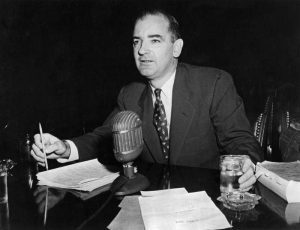 Sen. Joe McCarthy
Sen. Joe McCarthyIt was the early 1950s—the era of so-called “McCarthyism” with its Hollywood “blacklists,” and the “red scare.”
Those were dark days of political intolerance when innocent Americans accused of having “communist sympathies” saw their reputations obliterated and their livelihoods extinguished. McCarthy urged businesses, political organizations, and bureaucracies such as the U.S. Department of State to root out communists and those who accused of once being communists.
McCarthy used hearsay and intimidation to establish himself as a powerful and feared figure in American politics. He leveled charges of disloyalty at celebrities, intellectuals, and anyone who disagreed with his political views. McCarthy’s reign of terror continued until his colleagues formally denounced his tactics in 1954 during the Army-McCarthy hearings, when army lawyer Joseph Welch famously asked McCarthy, “Have you no decency?”
The same question could and should be asked of those in Washington today who are fomenting “cancel culture.”
Indeed, the dreaded question that leftists and those behind the worship of cancel culture seem to be asking is this:
“Are you now or have you ever been a conservative?”
Senator McCarthy would be proud—though he might be shocked to learn that those asking that question aren’t members of his Republican Party, they are, for the most part, liberal and leftist Democrats.
The bogeymen (and women) of 2021 aren’t the communists that Sen. McCarthy saw behind every rock and edifice in Washington, they are those accused of past or present-day “white supremacy,” hate, defiant LGBTQ opinion, support for Donald Trump, or (gasp!) engaging in any kind of speech that is critical of Joe Biden and the left.
Instead of a menacing Senator McCarthy, the witch hunters in 2021 are the “woke” hoi polloi of Hollywood, toadies of Big Tech, corporate human resource departments, social media mavens, mainstream media celebrities, university professors, teachers, and others who exercise institutional influence.
Some are even in the U.S. Congress.
So what can be done about this new wave of McCarthyism that is infecting our national political discourse with the voraciousness of the Covid-19 pandemic?
Here in California, State Sen. Melissa Melendez a Republican who represents my district in Sacramento, has introduced an anti-discrimination bill that seeks to add “political affiliation” as a protected class under state law. If passed, the legislation will protect California residents from discrimination when seeking housing or employment.
 Sen. Melissa Melendez
Sen. Melissa MelendezMelendez says her constituents (and I am one) are experiencing “cancel culture” shaming for their political affiliations. They worry they’ll be discriminated against in various ways for their affiliations.
“I hear about it all the time from constituents, and it’s very worrisome,” Melendez said recently. “And I don’t know what to tell them, because in their minds they think that the law protects them—but when we looked further into it, it really doesn’t.”
Currently, the California Fair Employment and Housing Act (FEHA) and the Education Code prohibit discrimination based on gender, nationality, race, ethnicity, disability, religion, sexual orientation, gender identity, and gender expression, among other characteristics.
“But there’s little protection beyond that. Because of where we are today, as far as politics in this state and in this country, I want to make sure that people are protected for their political viewpoints,” said Melendez.
Senate Bill 238 (SB 238), also called the Diversity of Thought Act, would amend FEHA by adding political affiliation as a protected class, while Senate Bill 249 (SB 249) would amend the Education Code to prohibit discrimination and harassment in schools based on political affiliation. Both were introduced in late January and referred to Assembly committees in February.
Specifically, Melendez’s bill would make it “an unlawful employment practice … to refuse to hire or employ … or to bar or to discharge” persons “from employment … or to discriminate against the person in compensation or in terms, conditions, or privileges of employment” because of their “political affiliation.”
Melendez is already experiencing opposition and backlash to her bill in the heavily Democrat-controlled California legislature. Some have accused her of being a racist, of favoring domestic terrorism, of being xenophobic, and even misogynistic.
Why am I not surprised?
If leftists and intolerant Democrats can get away with shutting down conservative thought and discourse, they will achieved what Joe McCarthy ultimately failed to do— eradicate an entire political class along with their opinions and convictions.
Then they alone—the “woke” socialist autocrats and oppressors will dominate the American political landscape, control our thoughts and ideas, and “cancel” (read exterminate) those who oppose them.
And America will have become the United Socialist States of America.
Stalin and Mao must be roaring with laughter from their abodes in the sweltering underworld.
March 1, 2021
Political Predictions for an Orwellian Biden-Harris Regime
Today I am posting a commentary from former California Assemblymember Steve Baldwin. Steve is an astute political observer and author who served as Executive Director of the Council for National Policy in Washington D.C. FYI, this Steve Baldwin is NOT the younger brother of Alec Baldwin. However, he is my cousin. I think you will find his comments instructive and prescient.
Political Predictions for an Orwellian Biden-Harris Regime
By Steve Baldwin
It’s time for my political predictions. Some of you will recall that I published a commentary at the beginning of the Obama era in 2008 and made some predictions, 90 % of which were correct. Because Joe Biden served as Obama’s VP and has hired hundreds of Obama cronies, we know this administration will be as radical, or more so, than the Obama administration was.
Economy
Biden has never held a real job outside of government and in his 45 years of public service he has never sponsored or supported legislation that assisted the free enterprise system, cut taxes or reduced regulation. After the destruction of much of our economy due to COVID, Biden was absolutely the worse possible pick. It would be like the Jews in Israel, after WW11, electing a Nazi to be their president. All the more reason to believe the election fraud was deep and systematic.
Using Executive Orders, Biden has already restored thousands of new regulations, many of the same regulations that kept the Obama economy under 2.5% GDP growth for all 8 years, a historic record. If Biden is able to pass the half dozen tax increases he is proposing, there will be a great disincentive for investment and growth. The worst tax, economically, will be a much higher tax on those he calls “the wealthy” but who are also the people who create all the jobs. He actually believes that government spending serves as an economic “stimulus,” as Obama did, but that was disastrous then as it will be now.
 Steve Baldwin
Steve BaldwinIndeed, if the current budget bill passes, $2 trillion will be added to the national debt, thereby surpassing the GDP for the first time since WW11. Not only with this be an enormous drag on the economy but I believe that hyperinflation is on the horizon since you can’t print this much money without inflation. Then there’s his obsession with passing a $15 an hour federal minimum wage hike. This policy alone will cost at least a million jobs alone.
Finally, Biden’s ban on oil leases on federal land (which is where MOST drilling occurs), the banning of new oil pipelines and entering the suicidal Paris Climate Accords, will all combined to devastate our energy supply and drive up energy costs.
Prediction
Biden’s incredibly naive economic policies combined with the impact of COVID will lead to a severe recession by mid-2022. We will start to see the beginning of hyperinflation by the end of this year. Unemployment will not bounce back to where it was during the Trump years and GDP growth will, even after recovering from COVID, remain around a stagnant 2% the remainder of Biden’s term. This could change if the GOP takes control of congress in the Nov., 2022 election and stops some of this agenda but the Dems are pushing to pass this economic agenda before the mid-term elections as they know a tidal wave of voter discontent will cause them to lose congress in two years.
Trans Athletes/Gender Anarchy
Biden is doing everything he can not only to promote the dangerous trend of people mutilating their genitalia but to proclaim that this is a “right” and then force the rest of us to bow down to this insane movement. Legislation backed by Biden will force schools, churches, and businesses to hire transgenders and allow biological males to use girls’ bathrooms and lockers. It will also force all women’s sports teams to accept biological males for simply declaring they “feel like a woman.” Already, trans athletes are dominating woman’s wrestling, track, and other sports.
Bear in mind, that no matter how much surgery one has or hormone shots one takes, a male is nevertheless born with one X and one Y chromosome, and a female is born with two X chromosomes. This makes a significant difference in muscle mass, strength, endurance, etc.
Predictions
Women’s sports will come under full assault and thousands of high school and middle school girls will drop out of sports rather than compete against biological males. Such policies will set back decades all women’s sports. The recent story of an MMA male crushing the skull of his female competitor is just the beginning of the horror stories that we will soon hear about on a regular basis.
Churches will fight this policy and court battles will drag on for years. In the meantime, religious freedom will suffer as Christians and others will be forced to accept a lifestyle that is unhealthy, immoral, and has a 20% suicide rate, but have no fear, Biden’s Education Dept has already pledged to promote this lifestyle in our K-12 schools.
Energy
Biden’s Green New Deal is still on the table and even though the Trump administration managed to achieve energy independence, Biden has now halted offshore drilling and oil leases on federal lands, not to mention killing the Keystone pipeline which, of course, will drive up the cost of energy and make us dependent once again upon our enemies for oil. Biden has announced he will rejoin the Paris Climate Accord which, like most international agreements loved by the left, forces the USA to pay for the rest of the world’s dirty environments while we maintain the purest air in the world.
Indeed, “climate change” orders have been issued to every agency, from NASA to the Navy, so that the bulk of our government will be chasing ghosts on behalf of a theory that tens of thousands of scientists say simply has no science behind it. Once again, as with the Obama era, millions of dollars will be spent subsidizing wind and solar energy companies. Remember Solyndra which went bankrupt? Times that by ten.
Predictions:
We will soon experience higher energy costs and return to dependence on the Middle East for oil. We will ultimately lose tens of thousands of energy-related jobs.
Foreign Policy
On foreign policy, Biden has stacked his administration with old retreads from the liberal foreign policy establishment, which means returning to the creaking global diplomatic institutions that favor summits, conferences, photo-ops, and empty threats. This is an “American Last” agenda that sends a message to our enemies that we can be taken advantage of.
Already, Biden has sent a message to China that we will not impede their path to domination over the USA. He even banned the use of the term “China virus” but more ominously, he is ending the trade war with China and has given China access to the US energy grid. There will be no consequences to China as it increases its theft of intellectual property, its currency manipulation, its militarism, and its attack on Hong Kong’s autonomy. None of this should be surprising, given the Biden family’s financial ties to the PRC.
Trump kept the pressure on Iran with a variety of sanctions, but Biden is not only proposing the removal of those sanctions, he is looking for ways to support Iran’s nuclear “energy” program. This, despite the fact that our intelligence services have confirmed that it is really a program to create nuclear weapons to be used against the West. Obama was such a moron that he gave 300 million dollars to Iran for its nuclear development program and as a result, Iran is now closer than ever to developing atomic weapons. And now Biden is picking up where Obama left off. Already, sensing Biden’s weakness, a terrorist proxy of Iran recently attacked a U.S. base in Iraq, killing a civilian contractor and wounding 9 other personnel, including a member of the armed forces.
Biden has sent a signal of weakness to Iran by taking Iran client Yemen off the state terrorist list and restoring payments to the terrorist Palestinian Authority, which for years has abused American and UN money to fund terrorist groups and pay blood-money to jihadis who murder Israeli citizens. Biden has also cut off arms sales to Saudi Arabia, a long-time ally of the U.S. that has been moving closer to Israel in order to thwart Iran’s aggression. These actions are undercutting Trump’s historic Middle East peace agreement – the Abraham Accords – but apparently, the Biden administration wants to abandon Israel and sabotage the only lasting peace agreement the Middle East has ever had.
Like most Liberals, Biden believes the USA should be the policeman of the world and while Trump did not start any new wars, Biden has already started a new war with Syria by commencing military action there. No one seems to know how intervening in Syria is in America’s national security interests, but who cares? The liberal media says it’s important so it must be.
Predictions
Iran obtains the nuclear bomb and uses it to blackmail Israel and other countries. Terrorism dramatically increases throughout the world, due to renewed funding from Iran. Israel comes back under attack from hostile neighbors. The US returns to fighting endless wars in the Middle East.
Racism
The idea that America is inherently racist permeates all aspects of Biden’s policies. He is now forcing all government workers to undergo training in “critical race theory” in order to make sure all 5 million government workers understand that whites are the root of all evil and that they must prove they are not racists. This theory was developed by Marxist scholars a few decades ago and if it’s not challenged, it will create much division and chaos in our culture.
Biden has even instructed his FBI to ignore the Islamic threat and make their number one focus “white supremacists” which, in the minds of liberals, means anyone who wants to control our borders, supports voter ID legislation, or judges people based on merit. In other words, everyone who is not a leftist nut.
Even his health care policies are being dictated by racial conspiracies, claiming that Blacks are disproportionately affected by COVID and therefore need to be prioritized when it comes to vaccinations. The Biden team also believes that environmental issues are based on race and that lower-income communities are environmentally devastated due to white racism.
Education policies will also be dominated by race, with federal funding targeted on specific racial groups as the expenses of other races. All such racial policies are unconstitutional, of course, as it is illegal for the government to spend federal dollars denigrating one race over another, but our courts are so corrupt, there won’t be any consequences.
Predictions
The Black Lives Matter conspiracy theory that everything that’s wrong with blacks in America today is due to white supremacy, will become the main focus of many of Biden’s policies. This dangerous and nutty theory will lead to more division and racial upheaval. Racial quotas and preferences will dramatically increase in all sectors of our society and always at the expense of merit.
Immigration
On illegal immigration, which the Trump team managed to reduce significantly, team Biden seeks to make illegal entry easier by halting all deportations and offering generous benefits to illegal aliens. This will almost assuredly result in millions of illegals heading north. Already, as I write this, massive caravans are forming in South and Central America. Not only is Biden stopping deportations, but he is actually releasing illegals convicted of crimes, including child molesters, rapists, and robbers.
Biden has also jettisoned all of Trump’s policies regarding refugees which means that anyone claiming refugee status will be allowed into the country even though we know nothing about their backgrounds. Not to mention Biden’s proposal to grant amnesty to all illegal aliens which, when combined with family unification policies, means that around 100 million people will be legalized, most of whom have no sponsor, no skills, and no education. The impact on our welfare, criminal justice system, and education system will be in the billions of dollars.
Predictions
Biden’s policies will create incentives for millions more to head north and combined with his effort to cut funds for border security, we will lose control of our border. Between 5 and 10 million people will come to America illegally during his term in office. Crimes committed by illegal aliens upon Americans will dramatically increase.
Crime
Violent crime is spiking in every major city controlled by Democrats, surely fueled by Democrat efforts to defund the police in major cities controlled by the left. This trend will be encouraged by Biden who has already ordered his Dept of Justice to investigate “racist” police departments while at the same time dropping all investigations of Antifa and Black Lives Matter whose riots caused 40 deaths, 1000 injuries, and destroyed 10,000 businesses. This kind of attitude will only encourage more thuggery and violence in our large cities.
Predictions
Crime will continue to increase in cities all over America, but Biden will blame “white supremacist” and “racist police” for this. Some of our cities will become uninhabitable, like Chicago.
Conclusion
The overarching theme of Biden’s policies is essentially make-believe conspiracies: white Supremacy, “evil” cops, global warming, etc. Every single policy enacted or proposed so far by Biden has put normal, average Americans last, behind global elites, Islamic dictators, non-citizens, gender freaks, and race-obsessed activists. The left is using these policies to advance socialism and to destroy what’s left of the nation our founding fathers created.
Steve Baldwin is the former Executive Director of the Council for National Policy and Young Americans for Freedom in Washington D.C. He is a former member of the California Assembly where he served as Chairman of the Education Committee and Minority Whip. He has been published in numerous publications and is the author of “From Crayons to Condoms, The Ugly Truth about America’s Public Schools.” He is a contributing editor to The Western Journal and a Senior Fellow with the Western Center for Journalism.
February 20, 2021
Our Upside-Down Nation & the Wisdom of Andy Rooney
Do you remember Andy Rooney? Between 1978 and 2011 he was a mainstay of CBS’s 60 Minutes. His homespun commentary at the end of every 60 Minutes broadcast was always filled with irony and prickly wit.
Here are just a few examples:
“I had one typewriter for 50 years, but I have bought seven computers in six years. I suppose that’s why Bill Gates is rich, and Underwood is out of business.”“People will generally accept facts as truth only if the facts agree with what they already believe”“Always keep your words soft and sweet, just in case you have to eat them.”“I’ve learned that life is like a roll of toilet paper. The closer it gets to the end, the faster it goes.”I had the privilege to meet Andy Rooney a few years before his death in 2011. I was the Dean of the College of Media at the University of Illinois and we were giving Mike Wallace of CBS a Lifetime Achievement Award for his work as a journalist. Rooney and I were seated at the same table during the award ceremony in New York’s Waldorf Astoria Hotel.
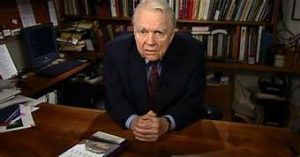 Andy Rooney
Andy RooneyAfter talking with Rooney that evening, I was convinced the college committee that selected recipients for the Lifetime Achievement Award should give him one too.
Rooney had a stellar career as a reporter before he became a 60 Minutes commentator. He was a correspondent during World War II and was the first journalist to reach the Ludendorff Bridge after the 9th Armored Division captured it on March 9, 1945. Capturing that bridge is considered one of most important triumphs against Nazi Germany.
“It was a reporter’s dream,” he told me. “One of the great stories of the war had fallen into my lap.”
Rooney was awarded a Bronze Star and the Air Medal for his service as a war correspondent in combat zones during the war. He was one of the first American journalists to visit Nazi concentration camps in 1945 and one of the first to write about them.
Having said all of that about Andy Rooney, I couldn’t help thinking about him when I received a note from a friend that was filled with the kind of pithy examples of irony and hypocrisy that Andy would have loved to comment on if he were still with us. I suspect he would have relished the opportunity to tackle the political and social hypocrisy we see in America today.
Here is the note, entitled “Things to Think About” I received. I suspect I have “buried the lead” here by waiting so long to get to it, but the pithy and spot-on comments reminded me of Rooney’s insightful wit. Please read on:
Things to Think About
Recently I have come to realize that America is in transition away from the traditions, principles, and mores that distinguished our country from the rest of the planet’s nations and civilizations. Something evil has invaded our country and our lives are never going to be the same. Sometimes I think that I have entered the Twilight Zone.
We are ruled by a profane alliance of public figures, politicians, news and social media that has redefined logic and distorted facts and truth. I can only conclude that their goal is to destroy our once great nation by making us once again energy dependent, increasing our unsustainable debt, destroying small businesses with onerous regulations, emasculating our military, and kowtowing to enemies such as China, Iran, Russia, and North Korea.
Don’t believe me? Then, how do you reconcile the following examples of doublethink:
Somehow it’s un-American for the census to count how many Americans are in America. Russians influencing our elections are bad, but illegals voting in our elections are good. If a guy pretends to be a woman, you are required to pretend with him—or suffer the wrath of the self-anointed despots of cancel culture. It was okay for Joe Biden to “blackmail” the President of Ukraine by withholding billions of dollars in aid, but it’s an impeachable offense if Donald Trump enquires about it. Twenty is too young to drink a beer, but eighteen is old enough to vote and join the military. It is fine for teachers in our elementary, middle and high schools to teach fallacious subjects such as Critical Race Theory and the 1619 Project which demean our nation and an entire race of people, but forget about teaching children such basics as math, history, English, and literature because those bedrock disciplines represent “white privilege.” People who have never owned slaves should pay reparations to people who have never been slaves. People who have never been to college should pay the debts of college students who took out huge loans for their degrees.Illegal immigrants with tuberculosis, polio, and the China virus are welcome, but you’d better make sure your dog is vaccinated. Irish doctors, German engineers, and other highly skilled people who want to immigrate to the US must go through a rigorous vetting process, but illiterate gang-bangers who jump the southern fence and enter illegally are welcome. $5 billion for border security is too expensive, but $1.5 trillion for “free” health care is not. If you cheat to get into college you go to prison, but if you cheat to get into the country you go to college for free. People who say there is no such thing as male or female genders are demanding a female President. We see socialist countries collapsing everywhere, but for some insane reason leftists say socialism is exactly what the United States needs. Some people are held responsible for things that happened before they were born, while other people are not held responsible for what they are doing right now.Traditional values, morals, and civility are not important in America, but looting, rioting, rape, and other forms of mayhem are okay if done in the name of “peaceful protest,” Black Lives Matter, and ANTIFA. People are dying of a virus that originated in China, but it’s racist to refer to it as the China Virus. We are living in an upside-down world, but pointing out all this hypocrisy and insanity somehow makes people who do expose it “racists?”Titanic America, the once unsinkable ship, has collided with an iceberg known as the Socialist Democrats, is taking on water, and is sinking fast.
Should all of us abandon ship? Or can we still save our nation by reigning in the power of the single-minded socialists who occupy Congress and the White House?
Wake up and speak up or get the lifeboats ready!
February 19, 2021
Why We are Seeing a Resurgence of Socialism Today
Today, I am providing a link to a talk that Wall Street Journal columnist and editorial board member Kimberly Strassel gave recently at Hillsdale College on why we are seeing a resurgence of socialism in America.
I have my own opinions about why this is happening and after watching Strassel’s talk, we agree on the reasons that a persistently failed system of government is on the rise in America—especially among this nation’s young.
As to reasons for socialism’s enigmatic rise in America, Strassel points to structural shifts in the nation, globalization, the politics of envy, over-regulation in America, our ever-growing government, an elitist ruling class, identity politics, and groupthink.
Younger Americans simply aren’t growing up, she says. They are living at home until their thirties, putting off marriage and home buying, etc.—in short, they aren’t doing the mature things that earlier generations did that would normally force them grow up.
 Kimberly Strassel
Kimberly StrasselIn her talk, Strassel tells the story of a conversation between a child and a parent. The child says, “When I grow up, I want to be a socialist.” The parent responds, “Okay, honey. But the problem with that, is that you can’t do both.”
I hope you will find the time to watch and listen to Kimberly Strassel’s talk. Just click on the link here:
https://youtu.be/f0IaOh35N10?t=112
In addition to her positions at the Wall Street Journal, Kimberly Strassel is the author of The Intimidation Game: How the Left is Silencing Free Speech & Resistance at All Costs: How Trump Haters are Breaking America. She is a frequent guest on weekend news shows Face the Nation, Meet the Press, and Fox News Sunday with Christ Wallace.
Hillsdale College is a private liberal arts college in Hillsdale, Michigan with a student enrollment of 1,500. It was founded in 1844 by abolitionists.
February 18, 2021
Some Thoughts on Rush Limbaugh & My Top 10 List of His Quotes
I was very sorry to hear today that the cancer that Rush Limbaugh had been fighting for the past year finally won. With Limbaugh’s death America lost its most powerful conservative voice since the death of William F. Buckley Jr. in 2008.
 William F. Buckley Jr.
William F. Buckley Jr.I first heard Rush Limbaugh on radio back in 1991. At first, I wasn’t sure what to make of him. Here was a guy with strong opinions and he wasn’t afraid to voice them. I had just returned to the United States from Japan and Asia where I had been the Chicago Tribune’s Chief Asia Correspondent.
At the time the United States was engaged in a ferocious trade war with Japan which was flooding the U.S. with Toyotas, Nissans, Hondas, Subaru’s, and Mazda’s—not to mention, computer chips, machine tools, steel, television sets, and a plethora of other electronic hardware.
Our economy was reeling from a recession caused by the S & L crisis and the Gulf War, and Japan was on the verge of passing the United States as the world’s number one economy.
“We have to stop raising the white flag of surrender before economic predators like Japan and run up the American flag,” Limbaugh said. “We need to start fighting back and make America number one again. Most of all we need to keep American jobs in this country.”
Rush was right. I had been covering the U.S.-Japan trade war for eight years from Japan and I had watched Japan blow past the United States in areas of technology research and development, business innovation, banking, and trade.
When I returned to Chicago, it seemed to me that most Americans had simply conceded defeat to Japan.
But here was Rush Limbaugh calling us out. Were we a nation of wimps or a nation of warriors? After all, we had just taken down the Soviet Union and we had the rest of the world’s failed Communist and socialist nations on the run. Capitalism and democracy had won out over Communism and totalitarianism.
Needless to say, I became an avid Rush Limbaugh fan and made it a point to tune in to his radio show whenever possible.
Now that he is gone, conservatives are confronted with a gaping void of fundamentalist thought and opinion. Don’t expect anybody to fill that vacuum anytime soon.
People like Rush Limbaugh only come along once in a blue moon. Liberals, leftists, socialists, and America-haters like AOC and the rest of her ludicrous “squad” are no doubt dancing joyful jigs now that his powerful voice is silenced.
Let them. They were no match for Rush’s common-sense and convincing arguments when he was alive and now that he is gone, they still aren’t.
As I promised in the headline above, here are my top ten all-time favorite quotes from Rush. Enjoy them.
They make a hell of a lot of sense:
10) “Liberals always exempt themselves from the rules that they impose on others.”
9) ““Liberals measure compassion by how many people are given welfare. Conservatives measure compassion by how many people no longer need it.”
8) “No nation has ever taxed itself into prosperity.”
7) “End results that work that don’t involve government threaten liberals.”
6) “Let me tell you who we conservatives are: we love people. When we look out over the United States of America, when we are anywhere, when we see a group of people, we see Americans. We see human beings. We don’t see groups. We don’t see victims.”
5) “In a country of children where the option is Santa Claus or work, what wins?”
4) “The world’s biggest problem is the unequal distribution of capitalism. If there were capitalism everywhere, you wouldn’t have food shortages.”
3) “Progress is not striving for economic justice or fairness, but economic growth.”
2) “What about feeling sorry for those…who pay the taxes? Those are the people NO ONE ever feels sorry for. They are asked to give and give until they have no more to give. And when they say ‘Enough!’ they are called selfish.”
1) “You know why there’s a Second Amendment? In case the government fails to follow the first one.”
RIP, Rush

